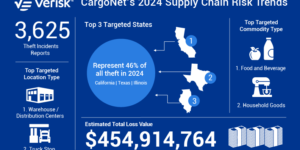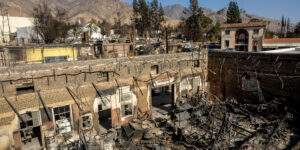There is no longer a need to ponder the “next asbestos” because the current litigation environment and the recent pace of additions to the list of emerging risks and trends in casualty insurance is enough to keep the industry on its toes.
Risks and trends are “coming in more furious and faster than [we saw] five or 10 years ago,” said Ania Caruso, casualty practice leader for the Southeast region at broker Gallagher, during Advisen’s Casualty Insights Conference.
Factors such as social inflation and litigation funding have resulted in nightmare losses for casualty insurers not only for litigation involving opioids, talcum powder, weed killer and traumatic brain injuries but also workplace injury claims. And the list of risks that could potentially drive future billion-dollar claims is growing.
“It’s difficult,” said Casey Petersen, primary casualty broking leader at WTW, during the panel discussion at the April 6 conference in New York. He said conversations with clients regarding emerging risks used to include a bullet-point or two. “Now it’s 12 pages long.”
According to Bob Reville, CEO and co-founder of Praedicat, PFAS is the “biggest thing out there.” Found in many different consumer products, litigation involving PFAS chemicals is in the early stages but expanding fast, Reville said.
“It has an immense footprint,” he said. Known as “forever chemicals,” PFAS has been used for 40 to 50 years in everything from firefighting foam to nonstick pans, making the potential risk “massive” since scientific studies have shown the chemicals to be harmful. Total exposure to the insurance industry from litigation could potentially be close to $100 billion without factoring in expected lawsuits involving water contamination.
Related Story: Are Forever Chemicals a Forever Problem for Insurers?
Furthermore, just around the corner, Reville said to get ready for claims involving microplastics. Studies over the years have found microplastics—very small plastic fragments—in the ocean, sea life, birds, air and most recently in the lungs of people, Reville said.
“Literature is emerging fast,” he added. “The crossover to litigation could happen next year or after, but it’s a big exposure to the industry.”
Arsenic-related claims started to surface last year, Reville said. In what could be the first example of a product liability claim from climate change, suits have been brought against baby food manufacturers due to elevated levels of arsenic in the rice-based product. Arsenic has been found to be more concentrated in soil due to drought and increases in temperature. Reville and other panelists said the agriculture industry may become more of a target for climate change-related litigation, especially when climate change can be linked to bodily injury.
Agriculture might also be marked for litigation from victims of human trafficking. New legislation allows victims to file lawsuits against entities that benefit from human trafficking. Other than agriculture, domestic services, shipping and hospitality industries may see these types of lawsuits, added Connie Germano, president of insurance at Kalepa.





















 Leading Insurance Innovation in the AI Age (Part 1: Culture)
Leading Insurance Innovation in the AI Age (Part 1: Culture)  Will California’s FAIR Plan Have Enough Cash for Its Wildfire Claims?
Will California’s FAIR Plan Have Enough Cash for Its Wildfire Claims?  Many Reasons Behind Certain Homes Left Standing After Wildfires
Many Reasons Behind Certain Homes Left Standing After Wildfires  New Commercial Auto Exposures: The Evolution of Terror Liability Risk
New Commercial Auto Exposures: The Evolution of Terror Liability Risk 






